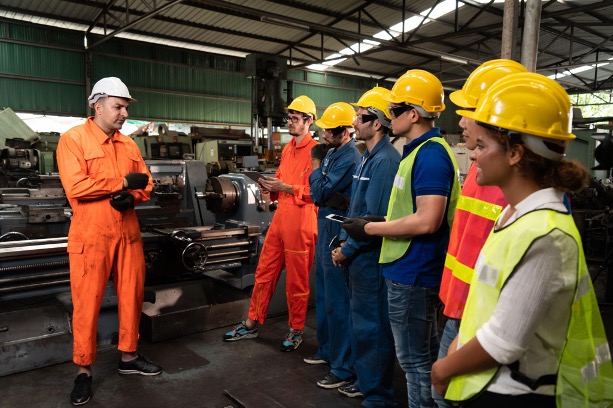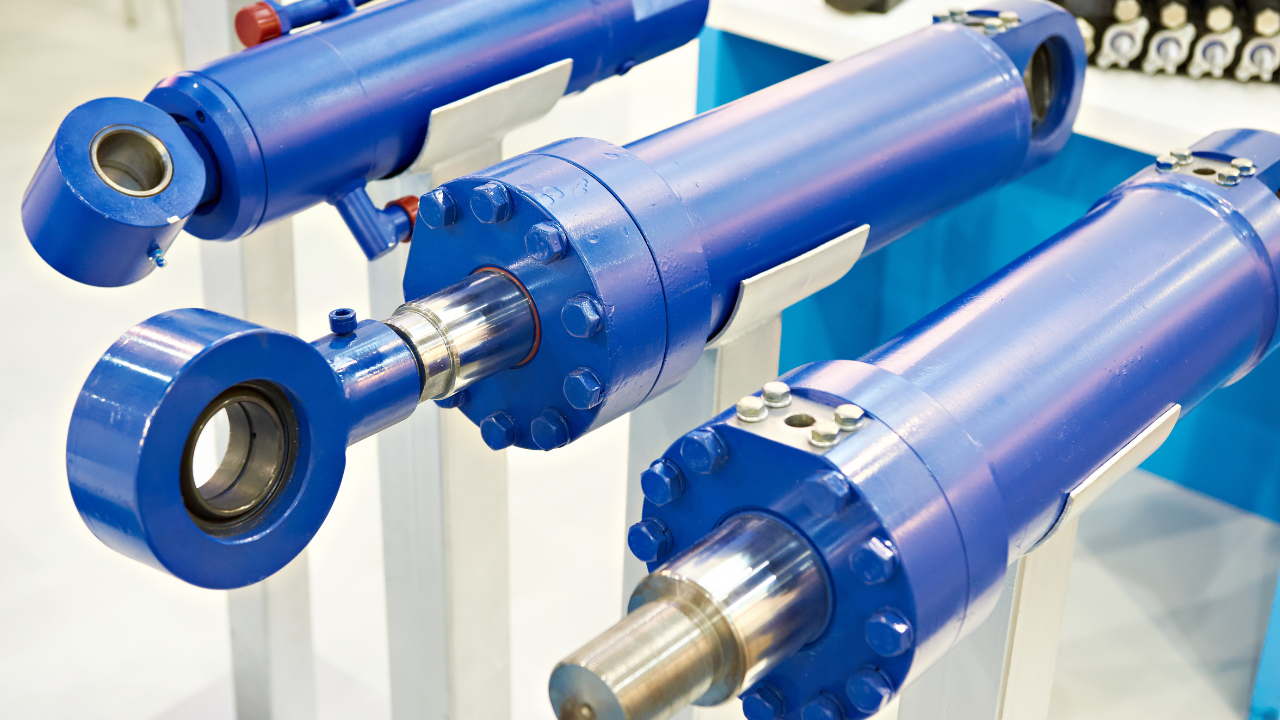The 5 Pillars of a Comprehensive Maintenance Strategy
Charlie Green, Research Analyst at Comparesoft
Posted on 8/8/2023
In every industry, particularly manufacturing, businesses depend on a diverse array of physical assets to meet customer expectations. Certain assets, while not necessarily the most expensive, are fundamental to the production of goods or services, underlining their significance in operational processes. The disruption of these pivotal assets can trigger a domino effect, disrupting the entire supply chain and potentially halting operations. Therefore, it is imperative for businesses to implement comprehensive maintenance management strategies for these key assets. According to recent data, over 80% of companies experience unplanned downtime of critical assets once every three years, underscoring the need for effective maintenance planning.

Why a Robust Maintenance Strategy Is Imperative
To ensure that essential assets consistently operate at maximum efficiency, it’s necessary to implement a maintenance management plan that is not only efficient but also highly reliable. This carefully crafted strategy is key in ensuring the continued performance of such assets, leading to a decrease in operational breakdowns, reducing errors or quality lapses, and significantly cutting down the need for constant supervision or monitoring.
According to a report by IBM, strategic maintenance management can reduce downtime by up to 50%, increase labour productivity by 20-50%, decrease equipment breakdowns by 70-75%, and cut maintenance costs by 5-10%. This compelling data underscores the vital need for businesses to implement a robust maintenance management strategy for their essential assets, ensuring durability, reliability, and sustained productivity.
The 5 Pillars of a Comprehensive Maintenance Strategy
- Reactive Maintenance Management – High Costs, Low Productivity
Reactive maintenance management, characterised by its high costs and low productivity, is a strategy often adopted by smaller businesses. This approach involves the maintenance team responding only when a piece of equipment or machinery fails. While this strategy may initially seem beneficial due to less standby manpower, planning, and upfront costs, it is often short-sighted, with the disadvantages frequently outweighing the benefits.
For instance, according to a detailed analysis by Prometheus Group, reactive maintenance can end up costing 3-4 times more than proactive maintenance in the long run. This is primarily due to the increased costs associated with unplanned downtime, expedited orders for parts, and overtime labour. The same study reveals that teams spend a significant amount of their time, around 35-45%, on reactive maintenance, despite industry benchmarks suggesting an optimal level closer to 20%.
- Preventive Maintenance Management – A Proactive Approach
Preventive maintenance management is a forward-thinking approach that emphasises regular inspections and timely interventions to prevent equipment failure. Unlike reactive maintenance, which responds to equipment breakdowns as they occur, preventive maintenance aims to identify and address potential issues before they lead to significant problems.
The approach of preventive maintenance management involves the formulation of a tailored maintenance timetable for every asset. This timetable could be daily, weekly, or monthly, and is determined by factors such as the asset’s operational frequency and the necessary uptime. While this approach necessitates regular checks by maintenance personnel and incurs consistent downtime expenses, the ability to circumvent expensive disruptions underscores its value. For example, a 2016 study by IBM revealed that about 30% of preventive maintenance activities were unnecessary. However, the elevated costs were counterbalanced by the capacity to evade the costly disruptions that come with reactive maintenance.
In this scenario, the role of Computerised Maintenance Management System (CMMS) software becomes crucial for businesses aiming to implement their preventive maintenance strategy effectively. The software facilitates the scheduling of maintenance tasks at predetermined intervals, which could be based on time or usage. This feature ensures consistent maintenance and reduces the risk of neglecting vital maintenance tasks. Furthermore, the CMMS software issues alerts and reminders about impending maintenance tasks to the relevant personnel, ensuring timely completion of tasks.
The CMMS software not only records all maintenance activities but also offers a structured system to monitor the lifecycle of each piece of equipment, from installation to decommissioning. This tracking capability aids in forecasting potential issues before they escalate into significant problems, leading to effective preventive maintenance. Therefore, through enhanced scheduling, efficient resource allocation, superior compliance tracking, and predictive maintenance capabilities, CMMS software significantly aids in improving a business’s preventive maintenance strategy.
- Condition-Based Maintenance Management – Maintenance Using Defined Limits
Maintenance management based on condition is a strategy that employs monitoring tools to observe, track, and report the performance of an asset to the maintenance team. This approach sets standard performance benchmarks for each asset, and any deviation from these benchmarks triggers the monitoring system to alert the maintenance team. The team can then investigate and rectify the issue.
The success of condition-based maintenance management hinges on the establishment of standard performance benchmarks for each asset. These benchmarks act as the standard for normal operation for each piece of equipment, covering parameters such as noise levels, temperature, and vibrations.
A prime example of condition-based maintenance is vibration analysis. This technique involves monitoring the vibrations produced by machinery during operation. As machinery components degrade or become misaligned, the level of vibration increases. Vibration sensors can detect this increase and alert the maintenance team when the vibration becomes excessive. This allows for early detection of potential issues, significantly reducing the risk of unexpected equipment failure.
Vibration analysis is particularly beneficial in industries where rotating equipment such as motors, pumps, and compressors are used. According to a report by Fiix Software, vibration analysis can help detect problems like imbalance, bearing failure, mechanical looseness, and resonance, which are common in such machinery. By addressing these issues early, businesses can avoid costly disruptions and extend the lifespan of their equipment.
In conclusion, condition-based maintenance management is a proactive approach that relies on monitoring the performance of assets against established benchmarks. By detecting deviations early, it allows for timely intervention, reducing the risk of equipment failure and associated costs. Whether it’s through vibration analysis or other techniques, this approach is a valuable tool in any industry that relies on machinery for its operations.
- Predictive Maintenance Management – Leveraging AI and Data Science
Predictive maintenance management, a cutting-edge approach in the field of maintenance management, leverages the power of Artificial Intelligence (AI) and data science to anticipate potential performance issues and schedule maintenance for an asset.
This advanced method hinges on the historical data accumulated throughout the asset’s lifecycle, which is stored in Computerised Maintenance Management System (CMMS) platforms. This data includes past performance records, maintenance history, and any anomalies or disruptions that have occurred. AI-powered analytical tools are then used to process this data, utilising machine learning algorithms to identify patterns and trends. These AI tools are capable of detecting subtle shifts in these patterns, indicative of a potential issue, much before a human observer could identify such changes1.
Predictive maintenance goes beyond simply indicating a potential breakdown; it often provides an estimated timeframe for the occurrence. This allows maintenance teams to proactively schedule interventions, thereby avoiding unexpected downtime. With a more accurate understanding of when a piece of equipment is likely to fail, companies can prepare for the maintenance activity, order necessary parts, and schedule the work at the most convenient time. This eliminates the need for constant system monitoring or hasty resource allocation when an issue suddenly arises.
In the context of predictive maintenance, the role of AI and machine learning is crucial. They eliminate most of the guesswork and help facility managers focus on other tasks. The implementation of machine learning-based solutions can lead to significant cost savings, higher predictability, and increased availability of the systems
- Prescriptive Maintenance Management – Predict, Prescribe, Prevent
Prescriptive maintenance goes a step beyond predictive maintenance. This approach not only predicts potential issues but also prescribes the steps that should be taken to address them. According to a guide by Limble CMMS, prescriptive maintenance provides multiple scenario modelling and uses machine learning and artificial intelligence to prescribe and automate a broad range of options and their respective outcomes. It assists businesses in understanding the economics of specific actions proposed, optimises maintenance operations, minimises downtime, and increases operating efficiencyHowever, it’s important to note that implementing prescriptive maintenance can be costly due to the requirement of retrofitting equipment with sensors and implementing necessary AI and machine learning capabilities meaning it may only be viable for larger organisations with bigger margins. It’s also not immediately effective and may need some time to generate confidence, especially in its unsupervised management of safety-critical systems. Thus, it’s currently viable only for the most critical pieces of equipment that have substantial repair or replacement costs.
So, Which Strategy is Correct?
The maintenance strategy for a business is not a monolithic entity, but rather a dynamic and evolving construct that adapts to shifts in the business environment, technological progress, and insights gleaned from past experiences. It is essential that a business’s comprehensive maintenance strategy incorporates a harmonious blend of various methodologies, each one tailored to its distinctive requirements and influenced by elements such as industry sector, asset intricacy, and budgetary constraints.
In the event of inevitable breakdowns, the presence of a robust reactive maintenance plan is vital to ensure the business impact is kept to a bare minimum. While preventive and predictive maintenance strategies often form the backbone of efficient maintenance management, the practicalities of functioning in a dynamic setting necessitate a certain level of reactive maintenance.
In essence, each of the five pillars of maintenance strategies holds its own importance. They should not be viewed as standalone strategies, but rather as interconnected components of a comprehensive maintenance strategy. By leveraging the strengths of each pillar and using them in conjunction, businesses can create a more resilient, efficient, and effective maintenance strategy.

Charlie Green
Charlie Green is Senior Research Analyst at Comparesoft. Facilities Management, Smart Buildings, Workplace Management and Fixed Asset Management are his key research areas. Charlie holds a masters degree which allows him to offer data led and empirical research driven reports.
Related Articles

Proactive Maintenance for Hydraulic Cylinders





